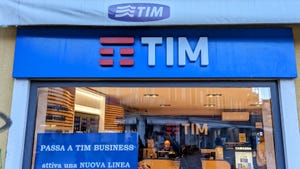February 13, 2025

The deal includes plugging in Nokia 5G voice core, packet core, and subscriber data management, which promises to deliver ultra-low latency bandwidth and multi-access edge computing, in the pursuit of real-time industrial automation in areas such as ports, mining and natural gas, and gaming services.
It will make use of Nokia’s MantaRay NM solution for a “consolidated and automated network view.” The deal also includes the rollout of Nokia Data Center Fabric solution, and Nokia’s 7220 Interconnect Router (IXR) system which is supposed to allow the operator to provide its services at “higher efficiency, reduced energy consumption, and increased capacity.”
The upgrade will allow the operator to unlock more value faster from its network assets through new business models and consumer and enterprise revenue streams, we’re told.
“Our vision is about enriching people’s digital lives and taking this important step with Nokia, of moving to a 5G standalone core network, supports our group-wide project initiatives of evolving our network operations with new digital capabilities and business models that strengthen the customer and enterprise experience,” said Sheikh Ali Bin Jabor Al-Thani, Chief Executive Officer at Ooredoo Qatar.
Raghav Sahgal, President of Cloud and Network Services at Nokia added: “As a leading operator in the Middle East, Ooredoo Qatar continues to drive transformation projects that meet its customers’ evolving digital needs. We are delighted to grow Nokia’s strong partnership with Ooredoo Qatar by providing our flexible 5G standalone Core capabilities and supporting the operator’s multi-level network requirements.”
Meanwhile Nokia has also announced today that it’s been brought in to upgrade Celcards’s residential fibre broadband network in Cambodia. The latter will migrate its fibre network from GPON to XGS-PON using Nokia’s Lightspan and Altiplano broadband solutions, and the upgraded network will provide up to 10Gb/s internet speeds to customers, we’re told.
Cellcard will deploy Nokia’s Lightspan Optical Line Terminals (OLTs) and its Altiplano Access Controller in the capital city of Phnom Penh, Siem Reap, and other major cities across the region.
Asitha De Costa, ICT Division CIO at Cellcard, said: “We are dedicated to delivering a best-in-class network experience to our customers, especially as data consumption continues to rise and individuals rely more on digital infrastructure for their professional and personal activities. We are delighted to collaborate with Nokia for the first time in our fiber networks domain to enhance the residential broadband experience of our subscribers. The new network will enable our users to enjoy high-bandwidth-consuming applications like gaming while enhancing network efficiency through automation.”
Earlier this week Nokia appointed a new CEO called Justin Hotard to replace incumbent Pekka Lundmark. For the past year Hotard has headed up the Datacenter and AI Group at Intel, and prior to that he was at HPE for nine years, most recently heading up the High Performance Computing, AI & Labs group. His appointment and the comms around it seems to suggest an increased pivot towards data centres and AI by Nokia – the latter of which rarely fails to make an appearance in any telecoms announcement in the last year or so in any case.
About the Author
You May Also Like










.png?width=300&auto=webp&quality=80&disable=upscale)


_1.jpg?width=300&auto=webp&quality=80&disable=upscale)